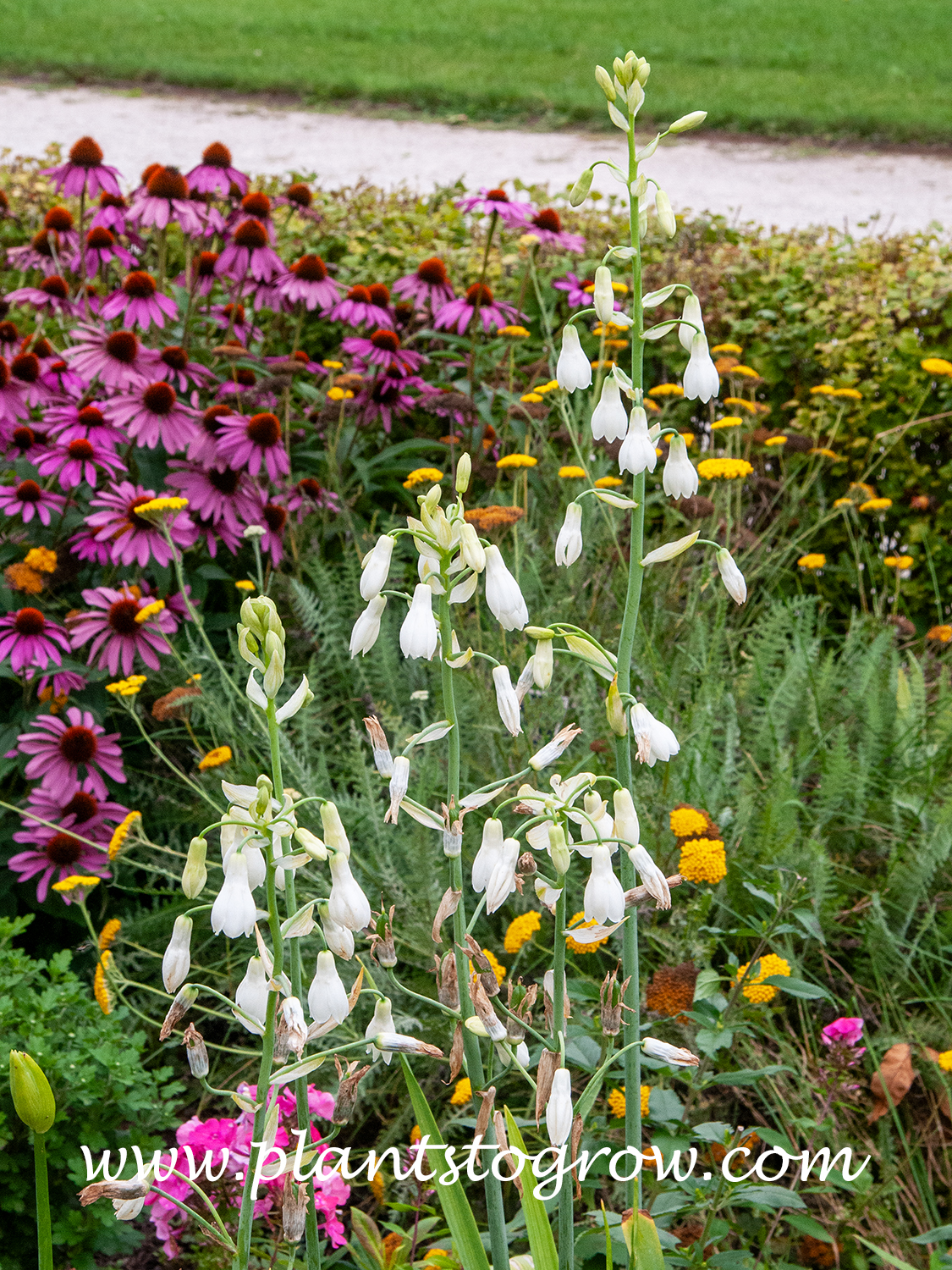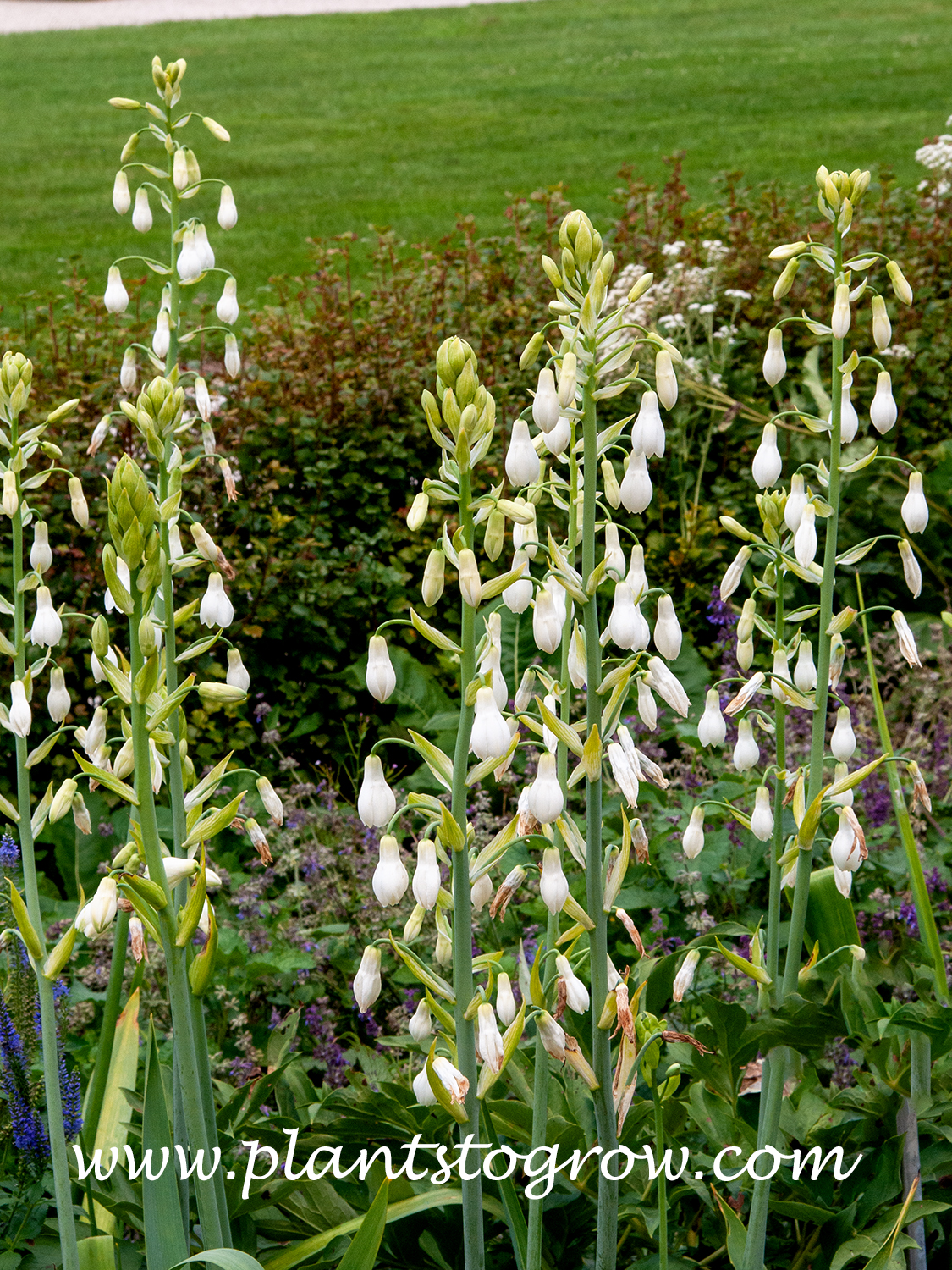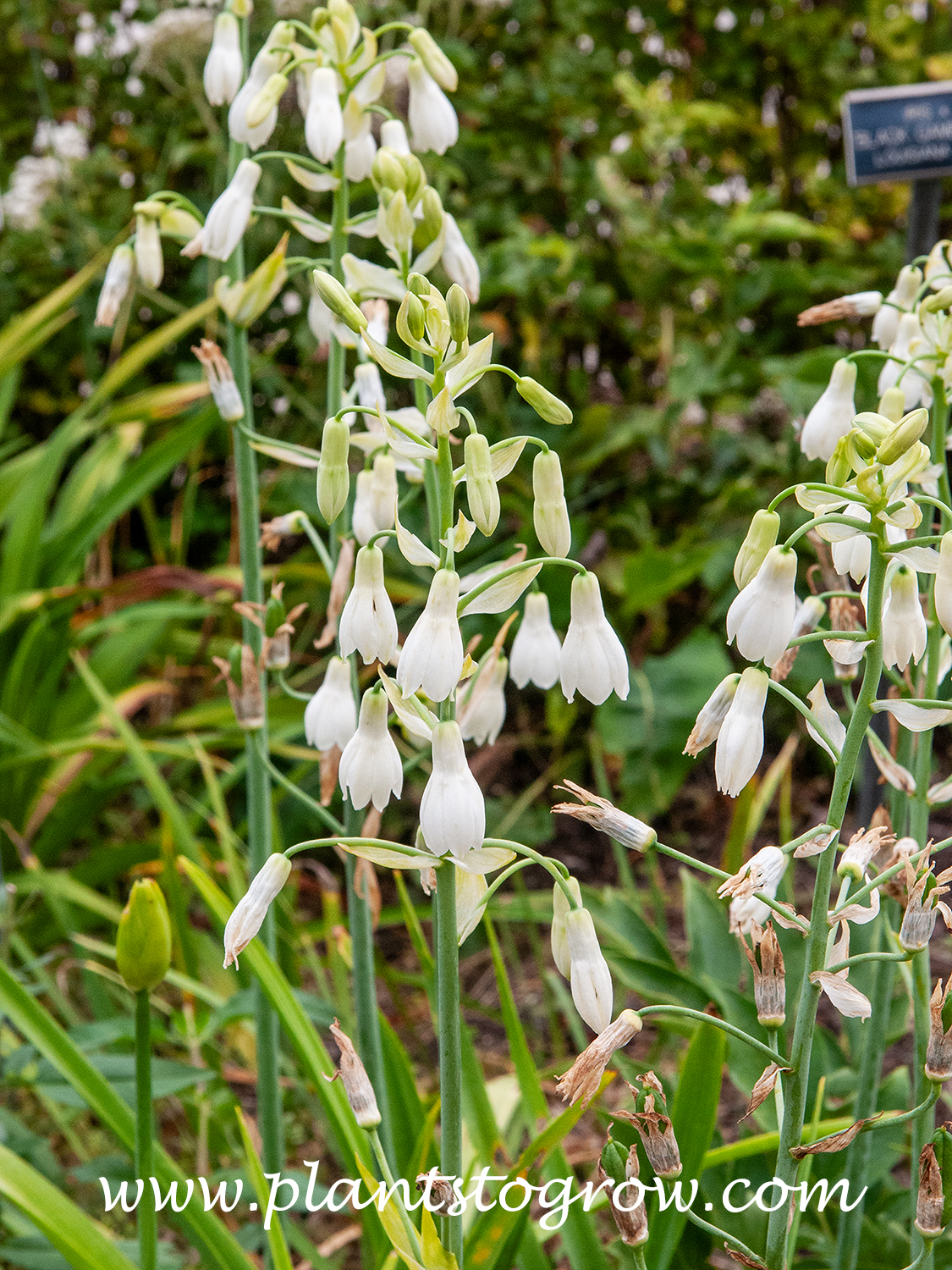| Description | Summer Hyacinth (Galtonia candicans) is a tall verticle plant with nodding white bell-like flowers. Blooming in late summer. Grows from a bulb. |
|---|---|
| Pronunciation | (gal-TOE-nee-ah)(KAN-dih-kanz) |
| Plant Type | Perennials Hardy, Bulbs, corms, tubers, rhizoms, etc. |
| Hardiness Zone | 6-10 |
| Sunlight | full, mostly sunny |
| Moisture | moist, average |
| Soil & Site | humus-rich, fertile, well-drained soils |
| Flowers | Fragrant, creamy white, funnel-shaped nodding flowers borne atop erect flowering stems growing 2-4’ tall. This is considered a summer blooming bulb. |
| Leaves | It has long, basal, sword-shaped gray-green leaves up to three feet long. |
| Stems | bulbs |
| Dimensions | 2-4 feet tall unbranched stems |
| Propagation | seeds, division |
| Native Site | Native to moist grassland in South Africa. |
| Cultivar Origin | This species was first cultivated in the northern hemisphere in 1862 when an English traveler named Thomas Cooper collected bulbs in a mountain pass that borders Natal and the Orange Free State. In 1870, it was mistakenly identified as a type of hyacinth; by 1880, a French botanist renamed it Galtonia after Sir Francis Galton (1822-1911). |
| Misc Facts | The bulbs can be dug and overwintered in a cool, dark spot. |

Cart



